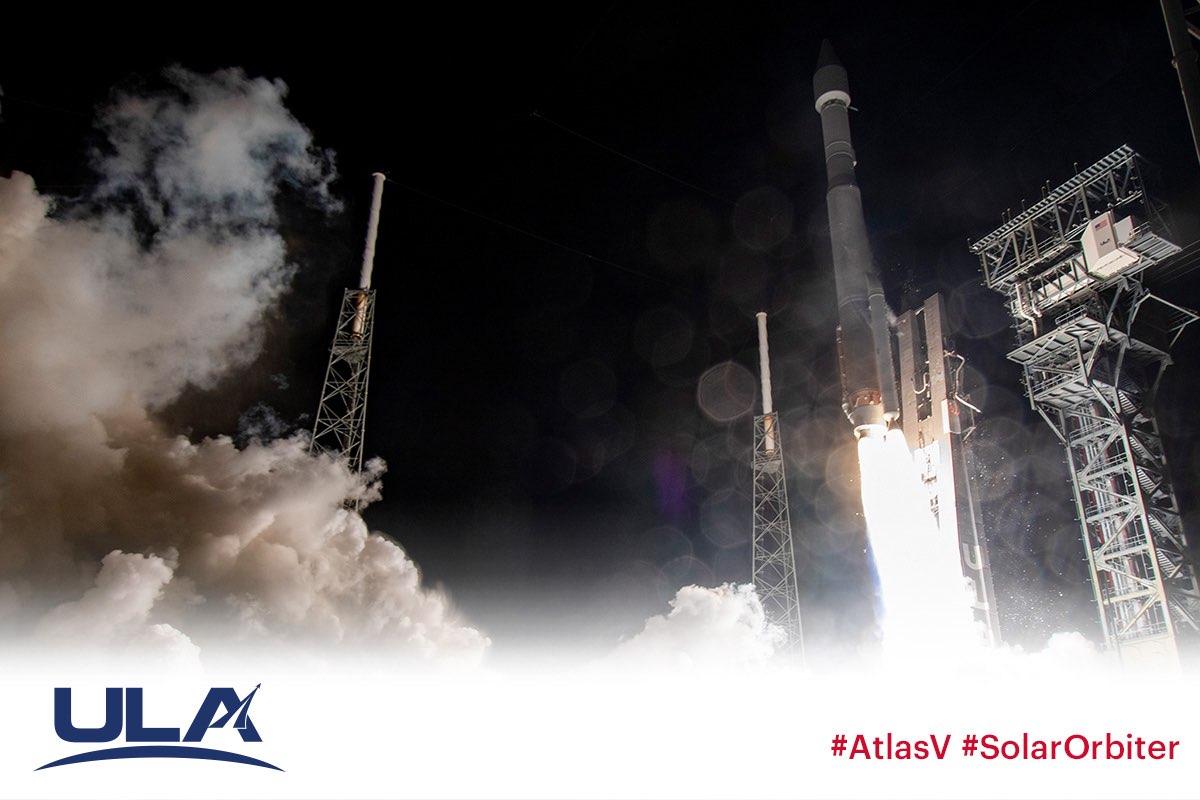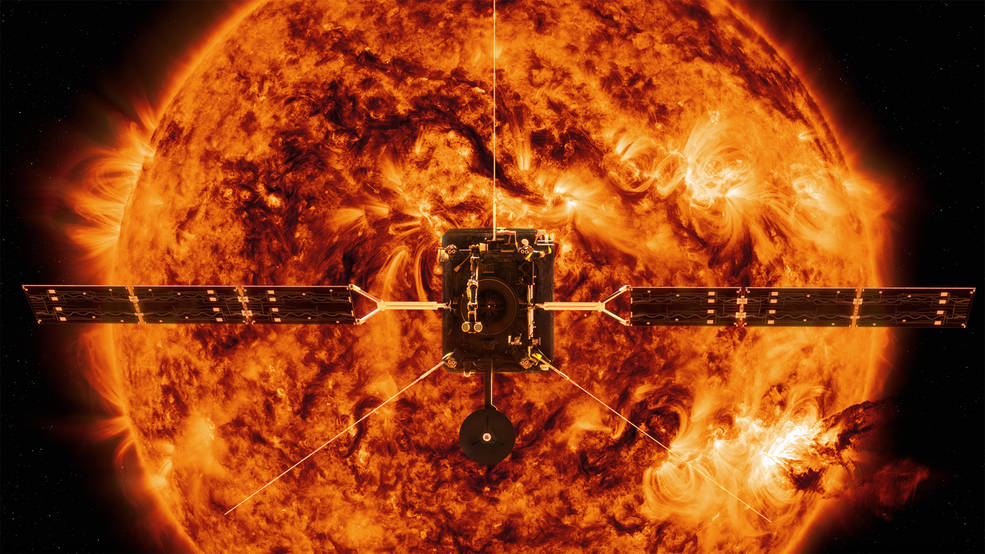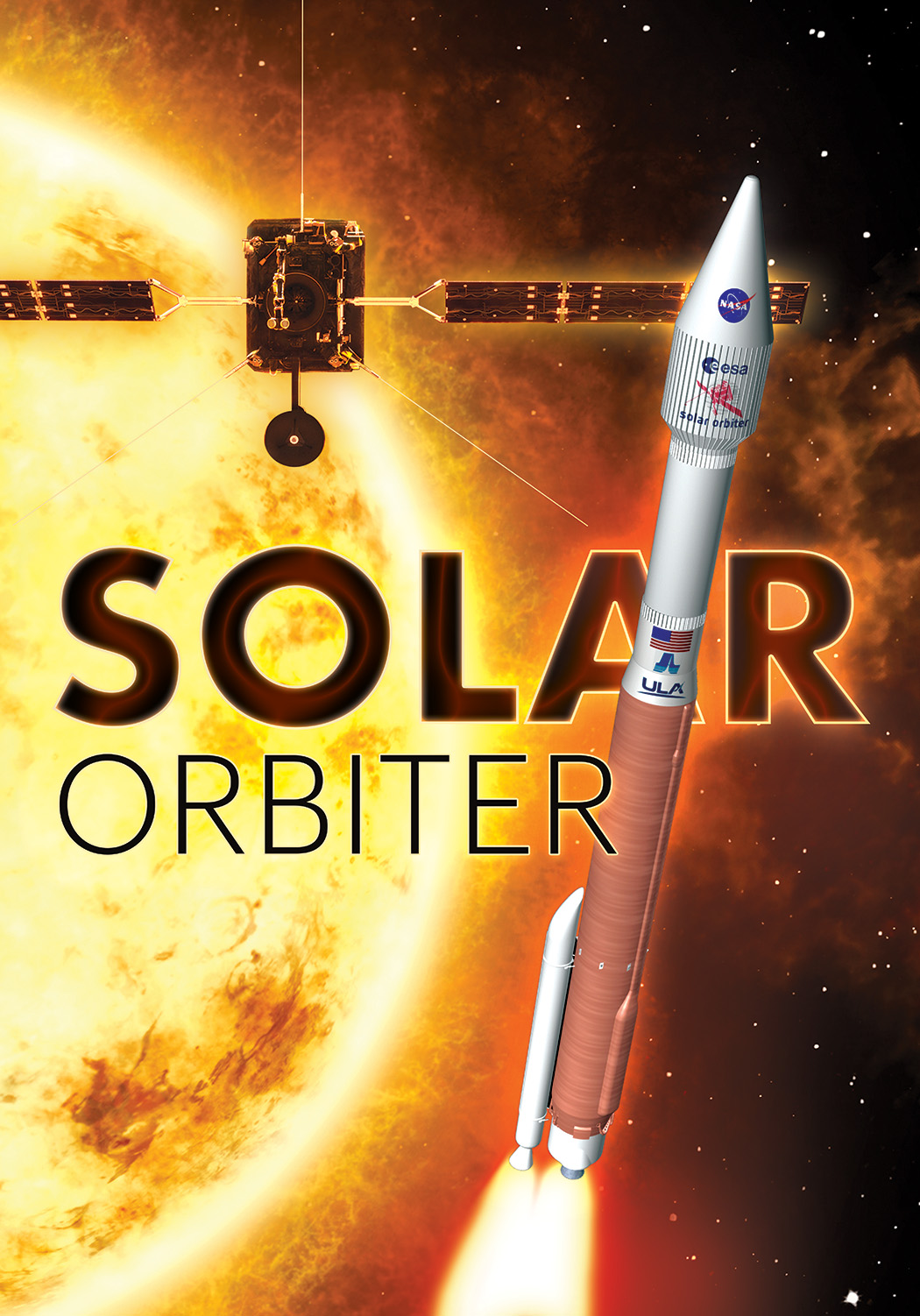On February 9 EST, the European Space Agency, in corroboration with NASA, launched the Solar Orbiter Probe. The spacecraft was launched aboard an Atlas V rocket from Space Launch Complex on Cape Canaveral (Florida, USA). This will be the first mission ever to observe the solar poles. Tatiana Podladchikova, an assistant professor at Skoltech, attended the launch. We caught up with Tatiana to learn about what’s in store for the scientific community if everything goes smoothly.
Video: ESA
Tatiana, you were invited to attend the launch of Solar Orbiter – an unmanned solar explorer and a joint ESA-NASA project. What will be the impact of this mission for the scientific community and the average citizen?
Indeed, the Solar Orbiter launch is a milestone event for the global community. With the invention of the telescope in the early 17th century, one of civilization’s greatest instruments, Galileo Galilei and other European astronomers discovered sunspots – dark areas on the surface of the Sun. In the 21st century, people are already sending man-made spacecraft to the Sun.
The project idea was proposed over 30 years ago by a consortium of scholars from around the world, including Russian scientists. At the time, the scientists had just discovered the solar wind, a flow of charged particles propelled from the Sun, and obtained the first images of the solar corona in the X-ray and UV wavelengths that are absorbed by the Earth’s atmosphere and can only be captured from outer space.
At that point, an abnormally high temperature of the solar corona figured among the inexplicable new phenomena: the temperature dropped from 6,500 to 4,100K across the Sun’s visible surface layer (photosphere) but as the altitude in the Sun’s chromosphere increased, the temperature climbed too, rising to 1,000,000K in the solar corona, which is absolutely illogical. How is it possible that the farther away from the fire, the hotter it becomes? There must be an additional process that causes the heating.
To top it all off, the solar wind was found to be of two types – slow and fast, which raises yet another question: how is the solar wind generated and accelerated?
It was then that the global community decided to build a satellite equipped to capture both the solar corona and the solar wind parameters, which, at the time, was the first and the best combined solution in terms of instrumentation quality and measurement techniques.
In August 2018, NASA launched its Parker Solar Probe named after Eugene Parker, an American astrophysicist who predicted the solar wind in 1958. Solar Probe and Solar Orbiter are new generation spacecraft that mark a new era in solar physics and are expected to revolutionize the understanding of solar processes and provide the global scientific community with unprecedented tools for resolving the major outstanding issues of solar physics: How is the Sun corona heated? How is the solar wind accelerated? How does the solar dynamo work?
A satellite launch is a big event, but the risks are enormous, too. Right now, NASA’s Parker Solar Probe is already headed toward the Sun. It was launched later than planned originally, and the launch of Solar Orbiter was also postponed. Why these delays? Why are the dates changed at the 11th hour? Also, how do the two satellites differ?
A launch can be delayed for a variety of reasons. Once, the launch was postponed because an air duct on the launcher’s upper stage changed position due to choppy wind at the launch pad. Another time, the weather was so bad that the satellite could not be delivered to the launch site on time. That is why everything has to be tested and checked over and over again. Also, the launch must fit within an available time slot.
Parker Solar Probe and Solar Orbiter complement each other in terms of measurement functionality. Parker Solar Probe will fly closer to the Sun (the nearest will be 9 solar radii from the Sun’s surface) and will, from time to time, reduce its perihelion distance by diverging from Venus. Its distance to the Sun will be 20 solar radii in September 2020, 12 in November 2021 and 9 in December 2024. Data picked at such short distances from the Sun surface will help understand how the solar wind is generated and accelerated. However, Solar Probe does not have a camera to take Sun imagery in the UV range, simply because a close-range Sun viewing technology does not exist yet.
Video: ESA
Solar Orbiter will fly at 0.28 A.U. from the Sun and use its sophisticated UV telescopes to simultaneously measure the sources of solar wind on the Sun and the wind parameters near the satellite. This should explain where the ocean water comes from and trace it up to a mountain creek, so to speak. Besides, Solar Orbiter will perform gravity-assisted maneuvers to go beyond the so called ecliptic plane – a circle around the Sun equator that all the planets orbit around. Solar Orbiter will climb more than 20 degrees higher and look at the Sun’s polar areas for the first time. That’s where we assume the fast solar wind comes from.
The solar activity rises and falls within an 11-year cycle which, along with powerful coronal mass ejections and solar flares, is driven by the Sun’s magnetic field. When solar activity is low, its magnetic field looks like an ordinary magnet with circular magnetic lines and two poles. As its activity rises, the Sun equator spins faster than its poles and the magnetic field becomes entangled like a ball of yarn. Near the activity peak, loops start to spring out of the ball, breaking through the photosphere and out into the atmosphere. They contain solar matter and are shot into outer space in the form of flares and coronal mass ejections. A new cycle starts when sunspots appear at the poles. As the cycle progresses, the spots move toward the equator. When the solar activity reaches its peak, the Sun’s north and south magnetic poles reverse. The new missions will provide us with unprecedented measurements of the Sun’s magnetic field at the poles that will shed some light on how the solar dynamo works, how the solar magnetic fields are generated and how this affects the Sun’s 11-year cycle.
Generally speaking, the data from the two satellites should help understand how the Sun works, how it creates the heliosphere – a home to the solar system planets – and how one can mitigate the effects of space weather on engineering systems in outer space and on Earth.
Speaking of space weather, what are the current global challenges it poses and what tools are available to address those challenges?
Equipment and robots are already operating in space. Soon man will travel to the Moon, asteroids, and eventually, other planets. This will create new global challenges, such as protecting humans and machines from space storms and other extreme weather events that cause problems in space and on Earth alike, affecting telecommunications and other engineering facilities on Earth, let alone people’s health.
For starters, we need hard facts and figures about which solar sources cause extreme space weather conditions and when, and these should be available for different planets, asteroids and satellites traveling across the solar system. We hope to get answers to these questions from Solar Orbiter and Solar Probe with their UV telescopes and other devices that should measure the solar wind density and velocity, the Sun’s global magnetic field parameters, and solar energy particles.
More inputs are expected from ground-based and space-borne magnetometers. As a matter of fact, these types of measurements were the starting point for space weather science. Now is the right time to consolidate and apply our knowledge in practice. We should remember the huge risks an asteroid may bring if it leaves its orbit. Nowadays scientists are trying to monitor both space weather and asteroid trajectories on a 24/7 basis.
How predictable is space weather? What are the prospects of space weather forecasting?
Space weather science came into being a while ago and has been thriving over the past decade.
In 1859, solar events caused one of the most powerful geomagnetic storms ever registered. The telegraph, the principal means of communication for businesses and individuals, was down in North America and Europe. Exactly at that time, British astronomer Richard Carrington was looking at the Sun through a telescope and noticed a blaze in the midst of sunspots, which was followed immediately by a failure of the telegraph networks. It was by mere accident that magnetic storms were attributed to solar flares and polar lights.
Another coronal mass ejection similar to the 1859 storm took place in July 2012, but it did not hit the Earth.
If something like this happened today, it would disable all gadgets, power lines, TV, radio and the Internet. In 1988, a powerful geomagnetic storm shut off an entire power grid and caused a mass blackout leaving 6 million people without heat, electricity and radio communications for almost 24 hours. On November 4, 2015, all flights were cancelled in Sweden due to disruptions in the radio and radar operations as a result of a solar flare. On September 6 and 10, 2017, strong solar flares forced the International Space Station (ISS) crew members to move to the on-board shelter. On several occasions, railways reported signaling failures with railway lights turning from red to green and vice versa when they were not supposed to. High solar activity is a good enough reason for stopping satellite maneuvers, adjusting satellite orbits and changing airplane itineraries. In 1972, mines off the Vietnamese coast detonated spontaneously because of a severe geomagnetic storm that produced virtually the same effect as a heavy ship sailing by. In the future, in-depth knowledge of the Sun’s behavior and the ability to predict space weather will be a key to ensuring the safety of unmanned vehicles and the roads they will travel on. The truth is that space weather forecasts are becoming increasingly important and have to be reckoned with in our daily life.
In the early 1900s when no experimental data was readily available, an outstanding Russian scientist, Alexander Chizhevsky, theorized that the Earth remains wrapped in the embrace of the Sun which imparts its temper to our planet. The first studies into space weather and solar-terrestrial relationships date back to the 1970-80s. A few decades ago, scientists did not have the solar corona images that we are lucky to have today, but they guessed that the Sun is to blame for geomagnetic storms and communication failures. The best minds were busy proposing and testing assumptions about the cause and effect relationships regarding various events in the solar system.
Now that we have a multitude of ground and space satellites to monitor the vast expanses from Earth to the Sun, we are confident that space weather can be predicted. Also, we can receive real data that help predict geomagnetic storms and trace powerful flows of charged particles to different points in the solar system, Earth included.
All of the world’s leading nations and nearly all European countries have their own space weather centers. ESA has launched a dedicated Space Situational Awareness Program where space weather is listed as a key priority.
As Konstantin Tsiolkovsky said back in 1912, “humankind will not stay on Earth forever. In the pursuit of light and space, it will first make a cautious step outside the Earth atmosphere and then will take control of all solar space.” 100 years later, Jeff Bezos, CEO and founder of Amazon and a private aerospace travel company, elaborated on the idea: “Energy is limited here. In at least a few hundred years all of our heavy industry will be moved off-planet. I believe that, one day, Earth will be zoned residential and light industry. We’ll move all heavy industry into space. We can build gigantic chip factories in space.”
As humankind has an even more ambitious plan to extend its space efforts farther away from Earth and fly to and from asteroids and planetary and lunar bases, safe space travel is given top priority. A thorough understanding of space weather is the cornerstone of ensuring the safety of people and equipment in deep space, in the solar system, and on Earth. A good captain will never let his ship venture into a storm!
How does Skoltech position its space weather research? Can you name a few projects that you find the most interesting?
Currently, the focus is on cultivating a new generation of scientists with profound knowledge and skills in the area and encouraging their regular internships with international space centers. Skoltech’s best achievements in space weather research include projects that deal with solar flares, coronal mass ejections and other solar events and their impact on Earth, and make forecasts of the Sun’s 11-year solar cycles and radio fluxes for station-keeping. Other studies focus on asteroids, predictions of high-velocity solar winds and geomagnetic storms, and development of advanced space weather services.
We have already gone beyond near-Earth space and are headed towards deep space. The next move prompted by a breakthrough in satellite capability should take us up from Earth and straight to the Sun.
Whatever storms are raging, I wish you good weather in space!
Contact information:
Skoltech Communications
+7 (495) 280 14 81




